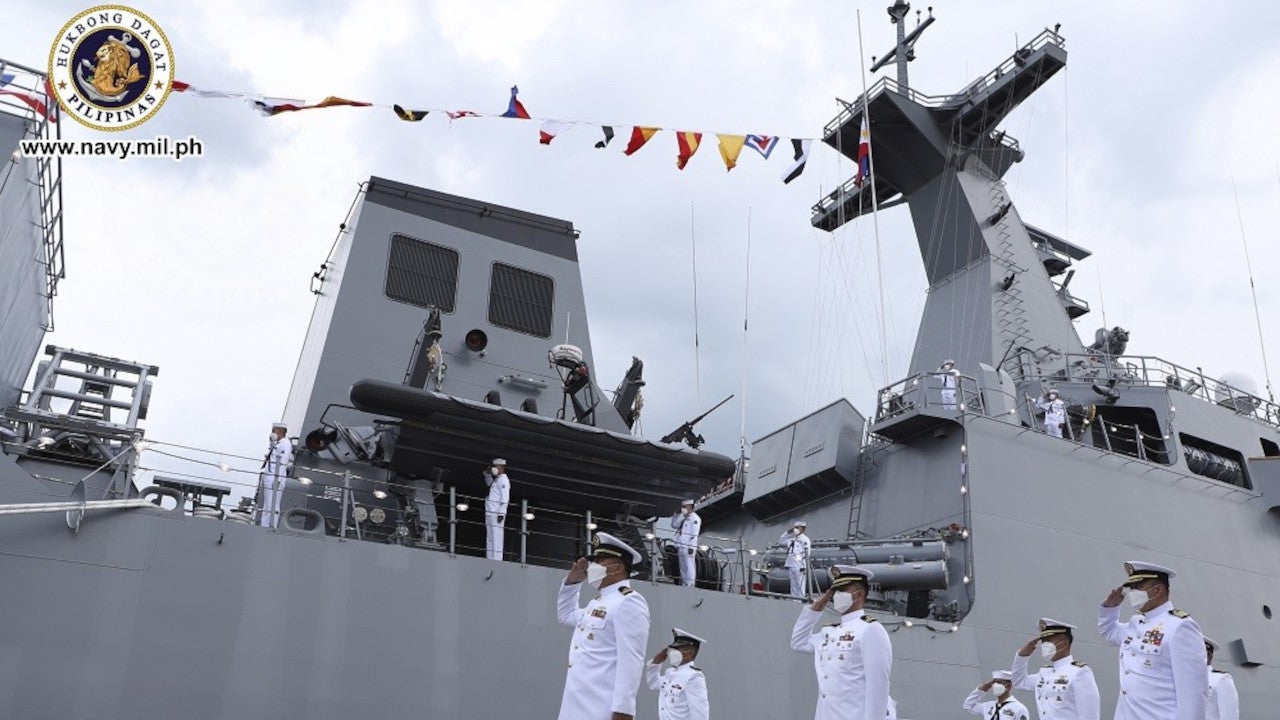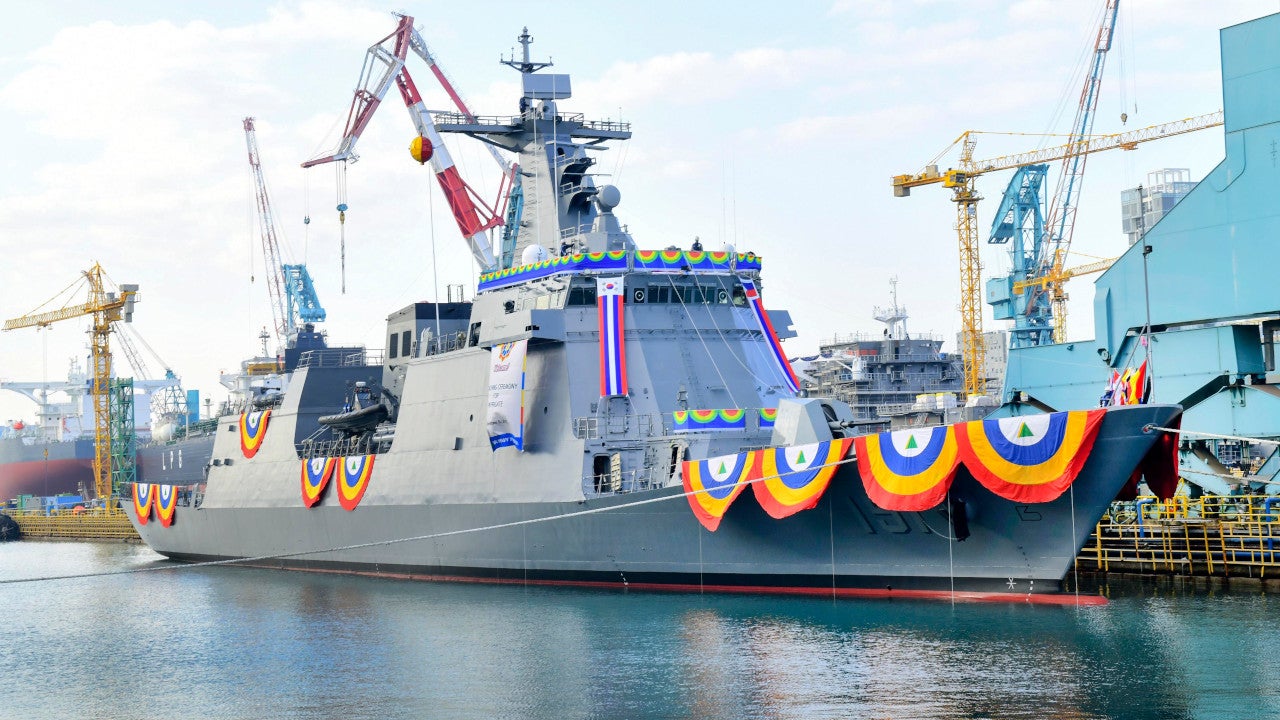The Philippine Navy ordered a class of two Jose Rizal-class multi-mission capable frigates from South Korean shipbuilding company Hyundai Heavy Industries (HHI), under the Frigate Acquisition Project (FAP), which is aimed at protecting the country’s territorial waters.
The vessels are based on the Incheon/FFX-I/HDF-3000-type multi-purpose frigate of the Republic of Korea Navy (RoKN).
The first steel for the lead ship, BRP Jose Rizal (FF-150), was cut in May 2018 and it was commissioned by the Philippine Navy in July 2020. The ship joined the Joint Base Pearl Harbor-Hickam, Hawaii for the Rim of the Pacific (RIMPAC) exercise in August 2020.
The second frigate, BRP Antonio Luna (FF-151), was launched in November 2019. It was originally scheduled to be delivered in October 2020 but was delayed to H1 2021 because of the Covid-19 pandemic.
Philippine Navy’s Frigate Acquisition Project details
The decision memorandum for the procurement of two missile-capable frigates under the Frigate Acquisition Project was issued in October 2015. Subsequently, HHI was selected as the lowest bidder with a bid price of PHP15.75bn ($338.8m) in June 2016.
The Department of National Defense (DND) of the Republic of the Philippines awarded a contract with HHI to build two light frigates in October 2016.
The mission capabilities of the frigates include anti-air warfare (AAW), anti-surface warfare (ASuW), anti-submarine warfare (ASW) and electronic warfare.
Design and features of the Philippine Navy’s future frigates
The hull and superstructures of the Jose Rizal-class frigate are built using marine-grade high-tensile metal to provide superior seakeeping ability. The ship is 107m long and 14m wide and has a displacement of 2,600t.
The frigate is designed with stealth characteristics to reduce its radar cross-section and infrared signature.
It has a 21.8m-long and 13.5m-wide flight deck towards the stern with the ability to handle one maritime helicopter, weighing up to 12t. A hangar is also fitted to accommodate the helicopter.
Two rigid-hulled inflatable boats (RHIB) are carried by the frigate to conduct military and emergency operations at sea.
An integrated navigation bridge, featuring communication consoles and multi-function bridge radar displays, are installed to provide maritime surveillance, monitoring and manoeuvre control.
The auxiliary equipment on board the vessel includes a firefighting, air-conditioning, and nuclear, biological and chemical (NBC) protection system.
Armament of Jose Rizal-class frigates
Each frigate is armed with an Oto Melara 76mm gun as a primary weapon and an Aselsan SMASH 30mm remote-controlled stabilised naval gun as a secondary weapon.
An eight-cell vertical launching system (VLS) is installed at the forward section to defeat hostile threats.
The frigates are equipped with Systems Engineering and Assessment (SEA) lightweight torpedo launcher systems (TLS), which can launch US Mk 44, Mk 46 and Mk 54 type torpedoes.
The vessels can carry weapons systems, including two anti-air missiles, two anti-surface missiles, close-in weapon system (CIWS), decoy launching systems, and four .50 calibre heavy machine guns.
Sensors / radars
The Philippine Navy’s multi-mission frigates are equipped with Kelvin Hughes’ SharpEye navigation radars, which operate in I and E/F bands to provide Doppler navigation and situational awareness.
The vessels feature Safran Electronics & Defense’s PASEO NS (Naval System) electro-optical fire control system for surveillance, target designation and fire control in both day and night conditions. A modern combat management system is installed to control the on-board sensors and armament.
The ships also use fire control radar, search radar, electronic countermeasures suite, tactical communication link, a differential global positioning system (DGPS), magnetic compass, speed log, electronic chart display and information system (ECDIS), automatic identification system (AIS), hull-mounted sonar, VHF/UHF radios, and other navigational aids.
HENSOLDT UK supplied Kelvin Hughes Mk11 S and X Band radar systems for the BRP Jose Rizal frigate.
Propulsion and performance of the Jose Rizal-class frigates
The Philippine Navy’s Jose Rizal-class frigates are powered by a combined diesel and diesel (CODAD) propulsion system, comprising four diesel engines and up to three diesel generators.
An integrated platform management system (IPMS) developed by Servowatch is installed in the frigates to monitor all power modules, including the propulsion unit, electric power plant and auxiliary / ancillary system. The IPMS features battle damage control system (BDCS) and on-board training system (OBTS).
The frigate offers a range of 4,500nm at 15k of cruising speed while its maximum speed is 25k. It can sustain operational presence for 30 days and can withstand rough sea conditions up to Sea State 5 in the Philippines.





